4.3. The patient management module
During the patient registration the national ID number can be
entered if available. The system generate for each patient a new record number
to allow identification for patients without the national ID numbers. For the
purpose of receiving the laboratory notification by SMS and/or email, the phone
number and e-mail information should be entered in the system after the patient
subscription. To prevent the duplication of the patient information, the system
have a search module that uses multi criteria variables to check if the patient
is already in the system prior to his registration. The patient registration
processes are shown in Figure 4.7 and Figure 4.8
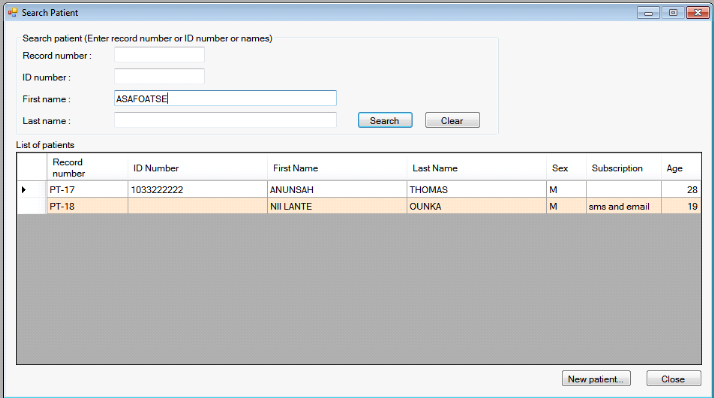
Figure 4.7: Patient search form
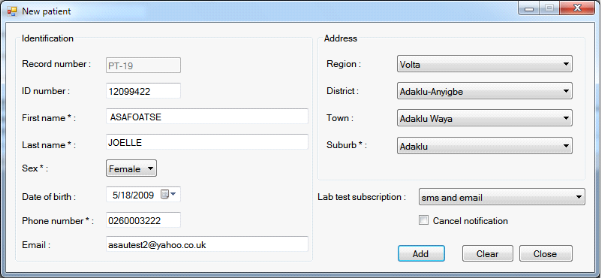
Figure 4.8: Patient registration form
4.4. The appointment and consultation module
Before having access to the consulting room to see a physician
the patient should be received at the nurse station and then being assigned to
the right clinician according to his/her case (Figure 4.9).
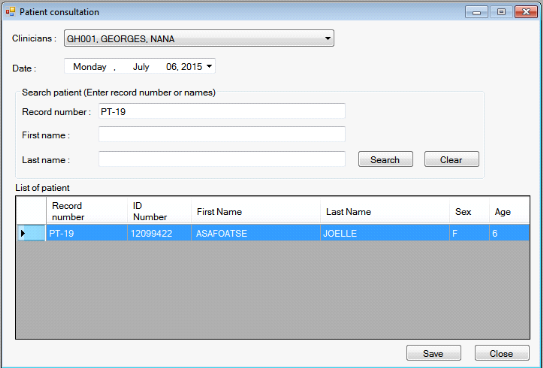
Figure 4.9: Patient assignment to clinician
3.1. The laboratory test order management module
After assigning a patient to a physician for the consultation,
the physician can only order a group of lab test for the patients that are
assigned only to him. During this step, the physician can decide to receive the
laboratory test results by SMS or e-mail. A laboratory test order can contain
many tests and the system issue a lab order number to allow unique
identification of the test order. The physician can also track his orders or
the lab orders requested by other clinicians. The figures 4.10 to 4.11
illustrate the lab order management process.
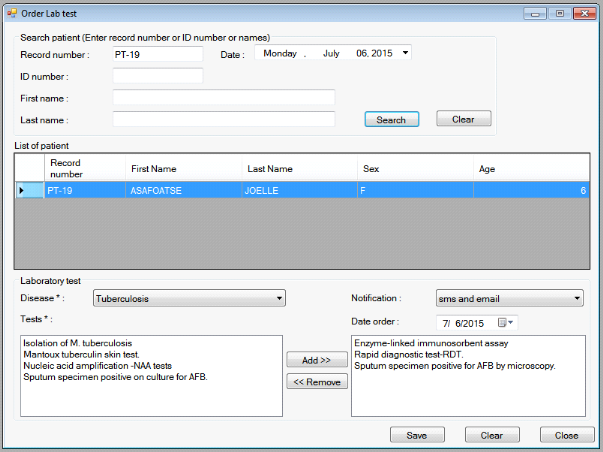
Figure 4.10: Laboratory test group order for a
patient.
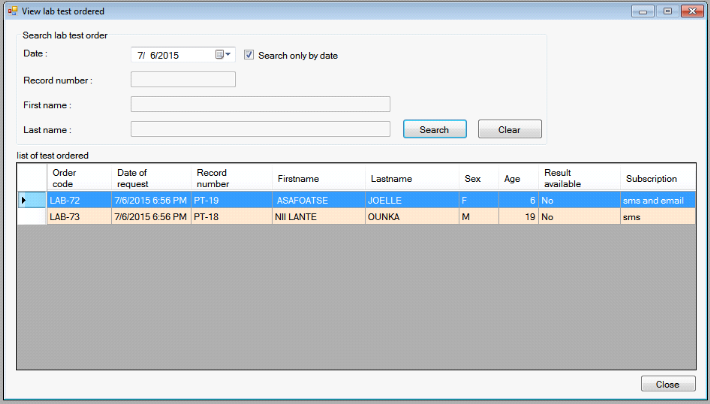
Figure 4.11: List of order place by a
clinician
4.5. The laboratory test result management module
After requesting order for the patient by the clinician during
the consultation. The Laboratory technician can consult the requested lab
orders and record the information on specimens deposit, and enter the lab
result for each tests performed. As all test cannot be done at the same time,
for example the RDT for malaria comparing with to the culture of sputum test
which can take more time, the laboratory technician can decide during the
record of test results to send notification for only one or a group of test, or
to send the notification after all test has been performed (Figure 4.12 to
4.18). To send notification by SMS, a GSM modem should be connected to the work
station reserved for that. For the e-mail notification, the system should be
also be connected to an internet network. If one of the connections is not
available, an error message appears at the status bar to inform the user on the
absence of the connection. But the network problem does not prevent the result
to be saved in the system.
The system also allow the message to be send/resend later if
necessary, since the email or the SMS could not reach the clinitian or the
patient due to the network provider service errors (Figure 4.19). The clinician
can consult the result for each lab order requested at the workstation and give
the treatment guide line for the patient which can also be viewed by the
nurses. The clerk or the administrative personnel can also check if the lab
result of the patient is available or not, without accessing to the details of
the laboratory test which are exclusively reserved to medical personnel. When
some results are available the system show a message at the status bar to alert
the clinician.
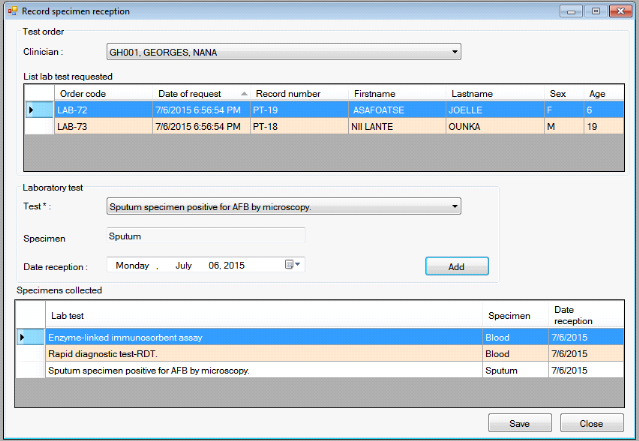
Figure 4.12:Laboratory specimen deposit record
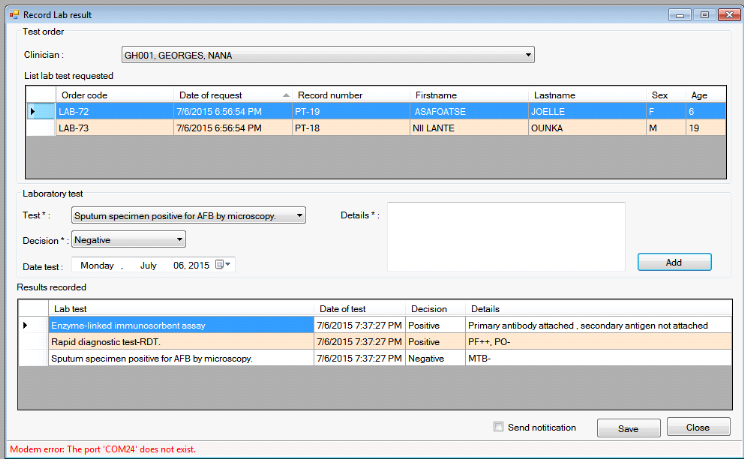
Figure 4.13: Lab result record and
notification
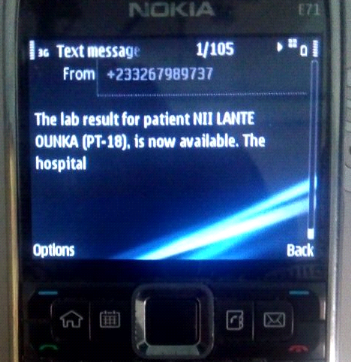
Figure 4.14: SMS lab result notification format for
the patient
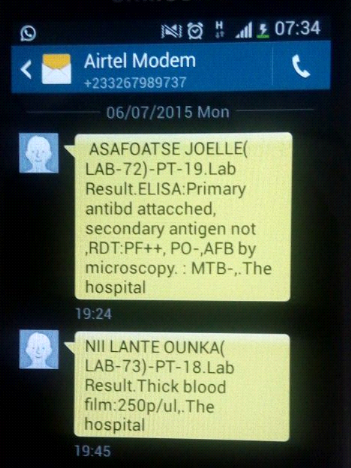
Figure 4.15: SMS lab result notification format for
the clinician
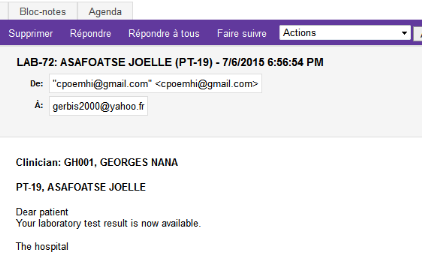
Figure 4.16: E-mail lab notification format for the
patient
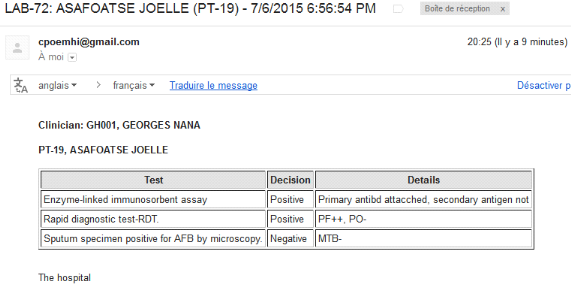
Figure 4.17: E-mail lab result notification format for
the clinician
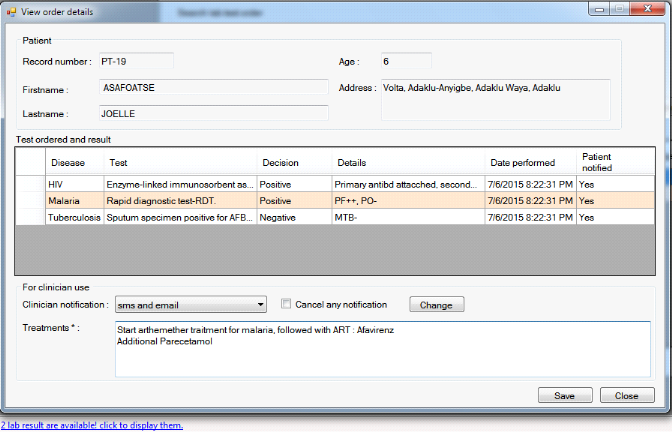
Figure 4.18: Lab result view and treatment
registration form
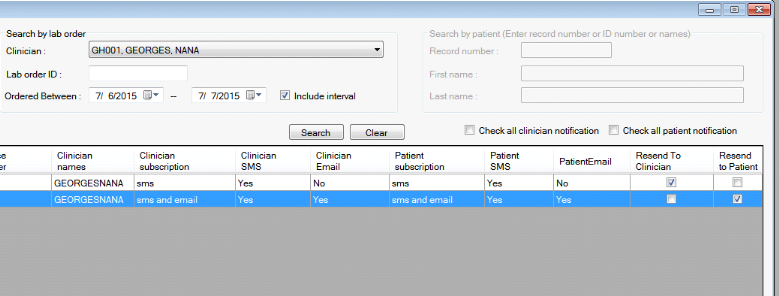
Figure 4.19: Resend of lab result notification to
patient and/or clinician
| 


